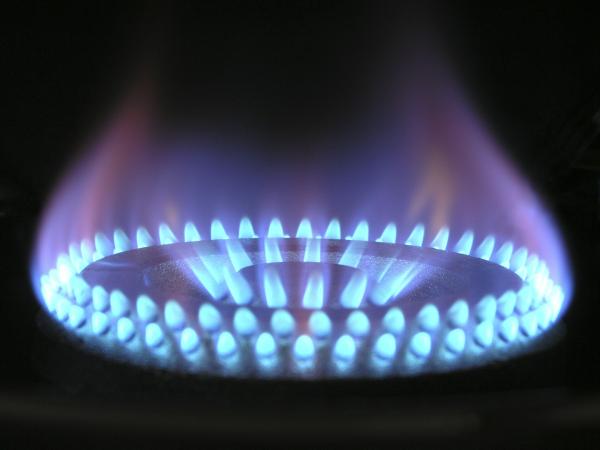Gas stoves are a threat to health and have larger climate impact than previously known, study shows CNN
Your Natural Gas Stove Is Fueling Climate Change And Harming Your Health—And It’s Worse Than Scientists Thought Forbes
Actually, the study showed that our gas appliances, particularly our stoves, do “leak” methane but a threat to our health – not so much. A larger impact on climate is true if 1% of 5% (0.05%) is large. Here is what the study considered and concluded.
Cooking is a well-known source of indoor pollution, but we are talking about open fire cooking in low and middle-income countries in most instances. Those “stoves” generate many pollutants, including the much condemned and misunderstood PM2.5 and soot. So let’s add a bit of perspective right away. 2.7 billion people cook using biomass (plant materials). The study considers the roughly one-third of Americans that cook with gas, 40 million homes, or based on the average family size 126 million. In terms of contributing to indoor air pollution from cooking, gas stoves in the US contribute a bit less than 5% to the global total.
Gas stoves produce NO2, a respiratory irritant absorbed in surfaces in the home and whose concentrations are primarily dependent upon a home’s air turnover – open windows and other sources of outside air. Those vents above our stoves either filter the air through a charcoal filter, releasing it back into the room, or it is vented out of the house. But we use those vents roughly a quarter of the time. Only Canada has established an indoor exposure limit of 90 parts per billion (ppb). Methane is released throughout the cooking cycle and, as it turns out, when our stoves are off.
The study
The researchers measured emissions from 57 stoves in private homes, Airbnb rentals, and properties for sale. They walled off the stove using floor-to-ceiling plastic drapes to create a known volume of space average of 20 m3, with two fans circulating air within the “room.” They scaled their measurements to discuss national numbers, using the work of another researcher who considered for how long and often 80 families used their gas stoves.
- Most stoves, irrespective of their age, leak methane when off – the gas connections were not tight.
- All stoves released 4.5 fold more methane when on. Of course, typically, they are off more than they are on. Emissions of NO2 were proportional “to the rate of natural gas combustion,” no surprise there, it is a combustion product. More importantly, while all the stoves leaked, the top 5 (9%) of stoves were responsible for 51% of the methane.
- The ignition of the burners released as much methane as 10 minutes of cooking. Further investigation found that burners lit by a pilot light were responsible for five times as much methane as burners ignited by an electric spark.
- Ovens also released methane during the preheat and cooking. Broilers remain on constantly, but ovens cycle on and off and have those additional ignition bursts – baking produced sevenfold more methane broiling. NO2 was proportional to burner size.
The application of mathemagic
Using their emission data of an average 649 gm of methane produced annually in a single home, multiplied by the other researcher's data on use, and “taking into account uncertainty estimates of the number of appliances,” they believe cooking with gas releases 28.1 Gg (gigagrams) of methane annually or “comparable in climate impact to the emissions of 550,000 cars.” More importantly, 5% of the homes were responsible for 47% of emissions. This is not a national problem as much as an individual home problem.
The mathematically inclined would note that we never considered the leak rate based on natural gas used. The researchers performed two calculations to derive that value; the higher of the two was a leak rate of 1.3%, and remember that 5% of homes and 9% of stoves were responsible for the majority of that leakage.
As to NO2, there are no indoor guidelines, but two-thirds of the time, people are exposed to levels greater than outdoor standards when not using range hoods, and one-third of the time when using them. Of course, that means you would have to be standing over the stove the entire time you are cooking, which is not always the case.
Nowhere did I find any discussion about health, so perhaps CNN and Forbes were making their headline more click-enticing with an editorial flourish. Does our cooking have a greater impact? The researchers demonstrated that we had underestimated the amount of methane and NO2 in our previous inventories of greenhouse gases. So yes, our cooking using gas has a greater impact than we initially thought. For protecting our health and reducing air pollutants, cooking with gas is far better than what the other 2.7 billion of us are using.
I agree with the researchers; 76% of those methane leaks occur when the stoves are off, which can be fixed by tightening the connections. And replacing pilot lights with electric sparks could reduce methane emission further still. These are two “fixes” that can be easily applied and do not require legislation or regulation, just holding large manufacturers to their social responsibility promises.
Source: Methane and NOx Emissions from Natural Gas Stoves, Cooktops and Ovens in Residential Homes Environmental Science and Technology DOI: 1 0.1021/acs.est.1c04707




